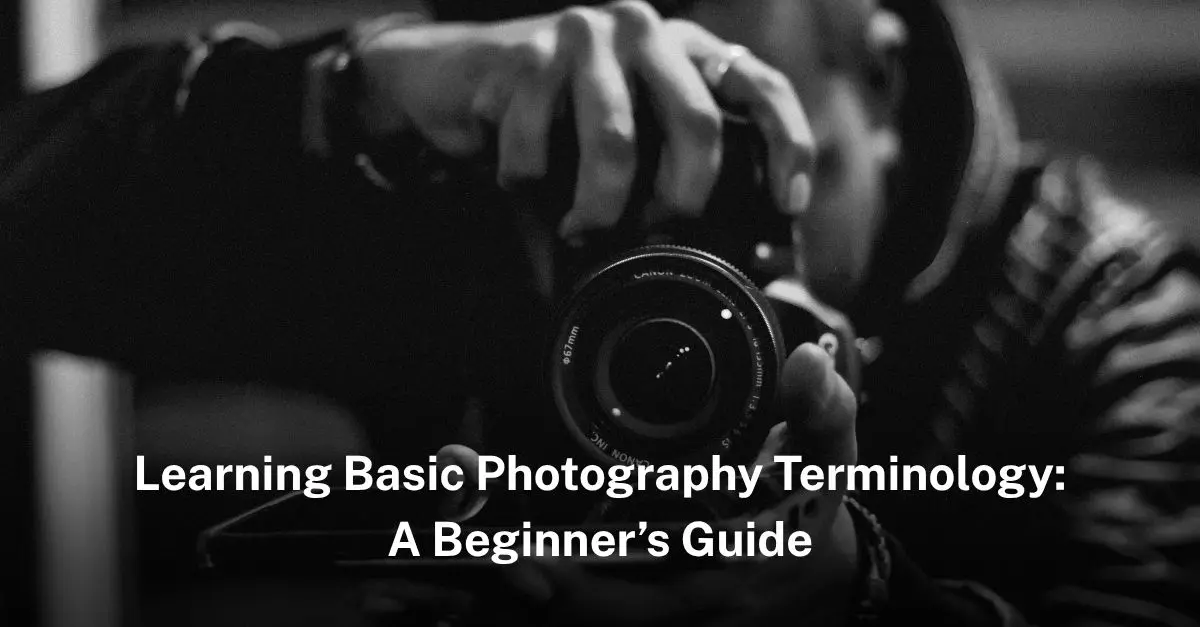Photography is a fascinating art form that combines technical skills with creative vision. Whether you’re picking up a camera for the first time or looking to refine your skills, understanding the basic terminology is crucial. This guide will introduce you to the essential terms every photographer should know.
1. Aperture
The aperture is the opening in a lens through which light passes to enter the camera. It’s like the pupil of an eye. The size of the aperture is measured in f-stops (e.g., f/2.8, f/5.6, f/22). A lower f-stop number means a larger aperture, which allows more light to reach the camera sensor. This also results in a shallower depth of field, creating a blurred background effect.
2. Shutter Speed
Shutter speed refers to the length of time the camera’s shutter is open, allowing light to hit the sensor. It’s measured in fractions of a second (e.g., 1/1000, 1/250, 1/30) or in whole seconds. A fast shutter speed freezes motion, while a slow shutter speed can create a motion blur effect.
3. ISO
ISO measures the sensitivity of the camera’s sensor to light. A lower ISO value (e.g., 100 or 200) means less sensitivity and is ideal for bright conditions. A higher ISO value (e.g., 1600 or 3200) increases sensitivity, which is useful in low light but can introduce noise or grain to the image.
4. Exposure
Exposure determines how light or dark an image will appear. It is a combination of aperture, shutter speed, and ISO settings. Proper exposure ensures that the image has the right balance of brightness and detail.
5. White Balance
White balance adjusts the color temperature of your images, ensuring that whites appear white and not tinted by other colors. Common settings include Daylight, Cloudy, Tungsten, and Fluorescent. Correct white balance helps achieve accurate color representation.
6. Depth of Field
Depth of field (DOF) refers to the distance between the nearest and farthest objects in a photo that appears acceptably sharp. A shallow DOF (achieved with a large aperture) isolates the subject from the background. A deep DOF (achieved with a small aperture) keeps more of the scene in focus.
7. Focus
Focus is the process of adjusting the lens to make the subject appear sharp. Cameras can have automatic focus (AF) and manual focus (MF) modes. Accurate focus is critical for achieving sharp, detailed images.
8. Bokeh
Bokeh refers to the quality of the out-of-focus areas in a photo. It’s often characterized by how the lens renders points of light in the background, creating a pleasing blur effect. Lenses with larger apertures (e.g., f/1.8) typically produce more attractive bokeh.
9. RAW and JPEG
RAW and JPEG are two common image file formats. RAW files contain unprocessed data directly from the camera sensor, offering more flexibility in post-processing. JPEG files are compressed and processed in-camera, resulting in smaller file sizes but less flexibility for editing.
10. Composition
Composition is the arrangement of elements within a photograph. Key principles include the rule of thirds, leading lines, framing, and symmetry. Good composition enhances the visual appeal and storytelling of an image.










Leave a Reply